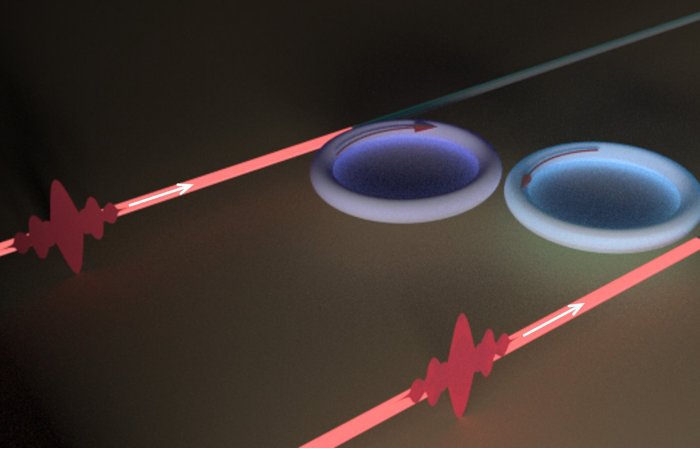Engineering Various Sources Of Loss Provides New Features For Perfect Light Absorption
Eddie Gonzales Jr. – MessageToEagle.com – Natural and manmade physical structures all lose energy, and scientists work hard to eliminate that loss or compensate for it. Optical and photonic devices lose energy through light scattering, radiation or material absorption.
In some situations, however, intentionally yet carefully designing loss in open optical devices and systems can lead to unconventional physical phenomena which inspires novel methods for optical control and engineering.
Researchers created two WGM microresonators with different absorption losses and coupled their optical fields by setting them close together. Each resonator is coupled to a fiber waveguide. By changing the gap between the resonators and waveguides, they were able to tune the coupling loss. Credit: Washington University in St. Louis/Lan Yang
Lan Yang, the Edwin H. & Florence G. Skinner Professor in Electrical & Systems Engineering in the McKelvey School of Engineering at Washington University in St. Louis, and a team that includes A. Douglas Stone, the Carl A. Morse Professor of Applied Physics and Physics at Yale University, and his lab uncovered new approaches to manipulating light absorption in optical resonators by different types of optical losses. They achieved a degeneracy of two coherent perfect absorbing modes, which leads to unconventionally broadened absorption spectrum and the capability to switch between weak and strong absorption over a broad frequency band. The work was published Sept. 9, 2021, in Science.
Yang’s team uses an experimental platform known as whispering gallery mode (WGM) microresonators, named for the renowned whispering gallery in London’s St. Paul’s Cathedral, where a person on one side of the gallery can hear the whisper of another person on the opposite end of the gallery. The optical WGM device acts similarly, though with light frequencies rather than sound. Those structures support resonances, i.e., only light with certain frequency can remain in such a system for long time. As a result of material absorption loss, the light can be absorbed by the resonator. Further, a fiber waveguide is usually placed tangential to the rim of the resonator for coupling light into or out of the resonator. The coupling between the resonator and the fiber creates an additional non-dissipative coupling loss channel, which allows the light trapped inside the resonator to escape from the fiber.
The researchers created two WGM microresonators with different absorption losses and coupled their optical fields by setting them close together. Each resonator is coupled to a fiber waveguide. By changing the gap between the resonators and waveguides, they were able to tune the coupling loss.
In their experiment, the researchers achieved a perfect absorption of incoming light from the waveguide channels, a situation called coherent perfect absorption (CPA), by optimizing the ratio between the two coupling losses and the two absorption losses. CPA is the time reverse of the lasing process—instead of emitting the light out, the system fully absorbs the illuminated light without any emission or out-scattering.
“In general, a lossy optical system is able to absorb incoming light, but perfect absorption cannot occur unless the loss parameters, such as the ratio between absorption and coupling losses, is judiciously designed and controlled,” Yang said. “What is more, for perfect absorption to happen, the incoming laser beams have to oscillate at an exact frequency and be injected from two waveguide channels with a well-designed ratio of amplitudes and phases.”
In a system with two optical resonators, there are two kinds of waveforms that can be fully absorbed, and they happen at two different frequencies. Therefore, the system usually behaves as two perfect absorbers. But with an optimization of the coupling between the resonators tuned by their gap, those two frequencies and waveforms merge making something unconventional happen. By tuning the system to that point, the researchers for the first time observed a line shape of the output spectrum that is broader than the conventional Lorentzian line shape.
“When the two CPA modes coalesce, the system reaches a special kind of degeneracy which is referred to as a perfectly absorbing exceptional point,” said Changqing Wang, a doctoral student in Yang’s lab and first author of the paper. “It is fundamentally different from other conventional types of degeneracies that were found in open wave systems. It seems like you have two absorbers which operate at the same frequency and perfectly absorb the same type of beam. But the system behaves much differently from a single absorber, nor simply the sum of two absorbers.”
With the degenerate perfect absorbing modes, by slightly changing the relative delay of the two laser beams that enter the two waveguides, the absorption of the system can vary dramatically from strong to weak. Compared to conventional absorber, this modulation occurs at a broader frequency range because of the effect of nontrivial degeneracy at the perfectly absorbing exceptional point. This phenomenon does not occur for a system without loss, or systems that have a balance of gain and loss.
“This work brings new insight to how to exploit different kinds of losses to manipulate an open physical system,” Yang said. “In the past, loss has enabled a great many interesting physical phenomena in non-Hermitian optical, acoustic and electronic systems, but there is great potential in leveraging the different roles of different sources of loss. For example, here in this work the material absorption loss plays a distinct role from the non-dissipative coupling loss in tailoring the scattering property of the system. The various types of losses enrich the degrees of freedom for optical engineering.”
This discovery of nontrivial degenerate perfect absorption of light brings insight for various applications in photonics, acoustics, electronics and quantum systems, Yang said. The perfectly absorbing exceptional points can be exploited to engineer optical sensors with ultrahigh sensitivity for nanoparticle detection, rotation speed measurement and bio-tissue imaging.
“The pure necessity of loss with no need for gain makes the design simpler, more accessible, and more stable, due to the fact that adding gain to the devices is always much more cumbersome and brings additional noise that deteriorates the system performance,” Yang said. “Loss is ubiquitous in nature, and by better understanding it, we make it more useful.”
Written by Eddie Gonzales Jr. MessageToEagle.com Staff
Related Posts
-
 X-Ray Analysis Without Doubt: Four-Decade Enigma Of Cosmic X-Rays Solved
No Comments | Dec 6, 2022
X-Ray Analysis Without Doubt: Four-Decade Enigma Of Cosmic X-Rays Solved
No Comments | Dec 6, 2022 -
 The ‘Three-Body Problem’ – Novel Theory Addresses Centuries-Old Physics Riddle
No Comments | Apr 16, 2021
The ‘Three-Body Problem’ – Novel Theory Addresses Centuries-Old Physics Riddle
No Comments | Apr 16, 2021 -
 Van Gogh’s Sky Beneath The Brushstrokes Is Alive With Real-World Physics
No Comments | Sep 17, 2024
Van Gogh’s Sky Beneath The Brushstrokes Is Alive With Real-World Physics
No Comments | Sep 17, 2024 -
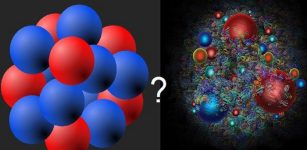 A Dense Quark Liquid Is Distinct from a Dense Nucleon Liquid
No Comments | Jan 1, 2024
A Dense Quark Liquid Is Distinct from a Dense Nucleon Liquid
No Comments | Jan 1, 2024 -
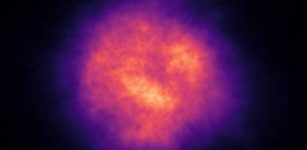 Tempest In A Teacup: Physicists Make Breakthrough In Creating Turbulence
No Comments | Jun 15, 2023
Tempest In A Teacup: Physicists Make Breakthrough In Creating Turbulence
No Comments | Jun 15, 2023 -
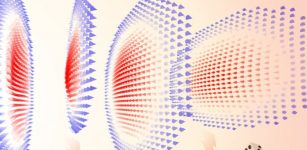 Researchers Use Tiny Magnetic Swirls To Generate True Random Numbers
No Comments | Feb 8, 2022
Researchers Use Tiny Magnetic Swirls To Generate True Random Numbers
No Comments | Feb 8, 2022 -
 Micius – Quantum Satellite Helps To Create Bridge Between Quantum Mechanics And General Relativity
No Comments | Sep 25, 2019
Micius – Quantum Satellite Helps To Create Bridge Between Quantum Mechanics And General Relativity
No Comments | Sep 25, 2019 -
 Can Unknown Physics Appear In Higgs Boson Interactions?
No Comments | Nov 8, 2024
Can Unknown Physics Appear In Higgs Boson Interactions?
No Comments | Nov 8, 2024 -
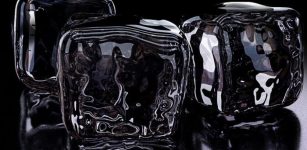 Researchers Turn Water Into Ice In The Quantum Realm
No Comments | Aug 5, 2019
Researchers Turn Water Into Ice In The Quantum Realm
No Comments | Aug 5, 2019 -
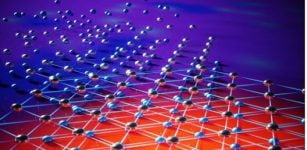 Quantum Melting Of Wigner Crystals – Documented
No Comments | Jul 7, 2021
Quantum Melting Of Wigner Crystals – Documented
No Comments | Jul 7, 2021

